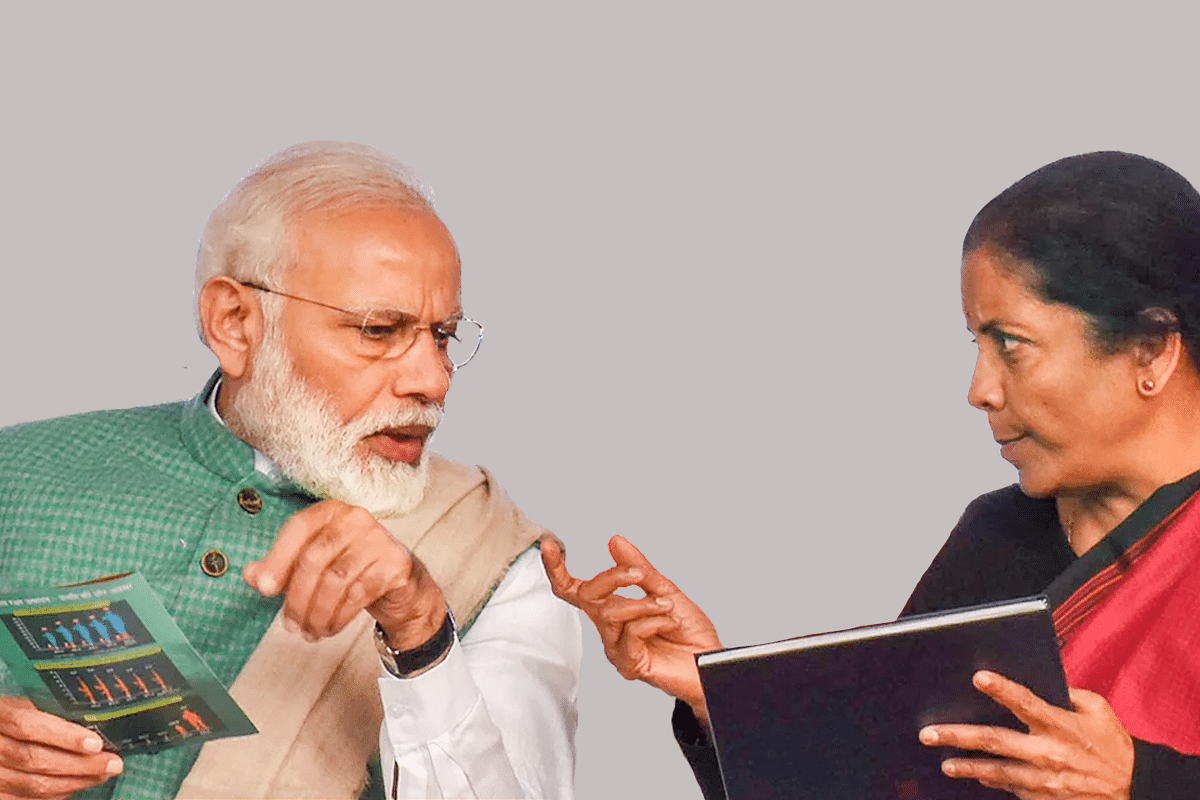Context
Nah, Reading The Q1 GDP Data Right — India’s Right Up There

Prime Minister Narendra Modi with Finance Minister Nirmala Sitharaman.
India's economy grew by 13.5 per cent in the first quarter of the current fiscal, according to official data released Wednesday.
Context: The consensus view is that reported Q1 GDP growth for April-June 2022 is less than anticipated. The data folks had expected 15-16 per cent growth.
The catch? Any projection is only as good as the assumptions that underlie them.
Let’s read this right. Number-crunchers have failed to factor in the serious economic disruption caused by the Russia-Ukraine war.
The effects, to name a few:
Commodity prices, especially crude oil and gas, went through the roof
Food prices spiked
Input costs shot up across a wide range of industries
Response for the greater good. Restrictive policies became the need of the hour to protect consumers.
India cut taxes on fuel, banned wheat exports, and imposed export duties on some steel products, among other things.
This makes Q1 a time when producers of goods and services as well as consumers were having to adjust to higher prices.
Given this reality, GDP growth of 13.5 per cent at constant prices (albeit on a lower base in 2021-22) and GVA (GDP minus taxes and plus product taxes) at 12.7 per cent makes India a standout performer.
The real story: Inflation.
GDP growth in nominal terms was a very normal 26.7 per cent.
“This implies that the GDP deflator, an economist’s estimate of system-wide price impact encompassing both goods and services, including intermediate goods and services, was as high as 13.2 per cent,” R Jagannathan writes in Swarajya today.
Contrast the high deflator with July’s CPI inflation of 6.7 per cent and WPI of 13.93 per cent.
The deflator was reflecting broader inflation at the wholesale level rather than at the consumer level, and the three measures of inflation will take some time to start converging.
So, the good part. In India, economic growth has usually been associated with rising inflation (consider 2004-2012).
The current bout of inflation indicates not just supply dislocations, but also shifts in pricing power, which feeds into a need for fresh investment as existing capacities get used up.
The other good news is that all sectors are now in growth mode, some more than others.
Sectors doing well — electricity, gas and water, utilities; trade, hotels, transport, communications, construction; financial, real estate and professional services; and public administration and defence.
Agriculture is also doing much better than last year, growing 4.5 per cent in Q1 GVA against 2.2 per cent last year.
With a 13.5 per cent growth rate, the GDP has recovered the pre-pandemic output and gone beyond by nearly 4 per cent, according to Finance Secretary T V Somanathan.
A couple more notes on Q1. The return of contact-based services, impacted the most by Covid-19 restrictions, on to the growth path is a highlight.
The weak spot is manufacturing, which grew by an underwhelming 4.8 per cent in terms of GVA, but that is on a huge jump of 49 per cent in Q1 2021-22.
Bottom line: Let’s not get sucked into the lamentations of analysts.
India is still the only game in town among large economies, with the US and EU staring at a possible recession, while China is in a full-blown slowdown amid a real estate and infrastructure crisis.
P.S. China registered an economic growth of 0.4 per cent in April-June 2022.
Adapted from R Jagannathan's article.
Support Swarajya's 50 Ground Reports Project & Sponsor A Story
Every general election Swarajya does a 50 ground reports project.
Aimed only at serious readers and those who appreciate the nuances of political undercurrents, the project provides a sense of India's electoral landscape. As you know, these reports are produced after considerable investment of travel, time and effort on the ground.
This time too we've kicked off the project in style and have covered over 30 constituencies already. If you're someone who appreciates such work and have enjoyed our coverage please consider sponsoring a ground report for just Rs 2999 to Rs 19,999 - it goes a long way in helping us produce more quality reportage.
You can also back this project by becoming a subscriber for as little as Rs 999 - so do click on this links and choose a plan that suits you and back us.
Click below to contribute.
Latest